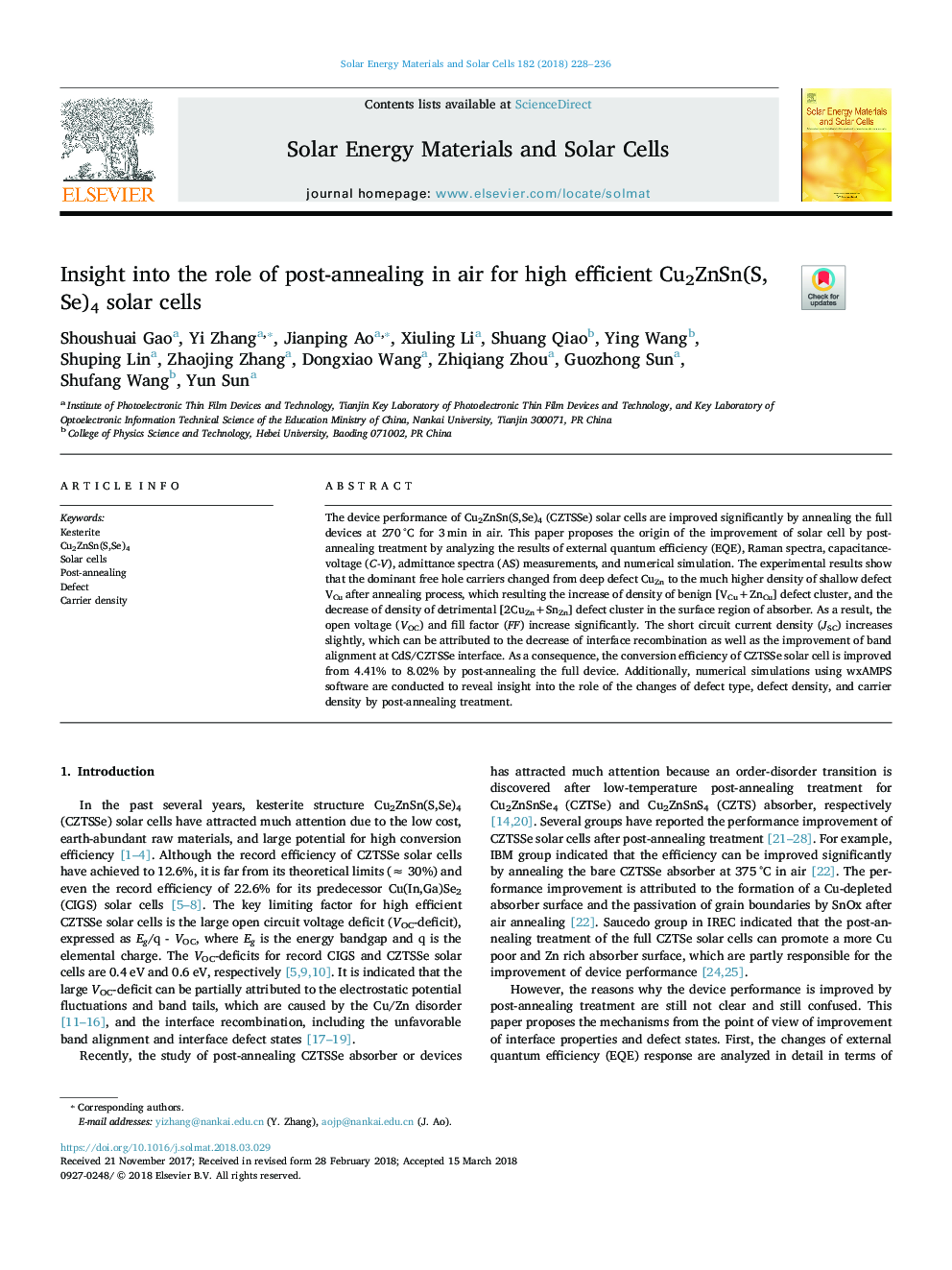| Article ID | Journal | Published Year | Pages | File Type |
|---|---|---|---|---|
| 6534139 | Solar Energy Materials and Solar Cells | 2018 | 9 Pages |
Abstract
The device performance of Cu2ZnSn(S,Se)4 (CZTSSe) solar cells are improved significantly by annealing the full devices at 270â¯Â°C for 3â¯min in air. This paper proposes the origin of the improvement of solar cell by post-annealing treatment by analyzing the results of external quantum efficiency (EQE), Raman spectra, capacitance-voltage (C-V), admittance spectra (AS) measurements, and numerical simulation. The experimental results show that the dominant free hole carriers changed from deep defect CuZn to the much higher density of shallow defect VCu after annealing process, which resulting the increase of density of benign [VCu+ZnCu] defect cluster, and the decrease of density of detrimental [2CuZn+SnZn] defect cluster in the surface region of absorber. As a result, the open voltage (VOC) and fill factor (FF) increase significantly. The short circuit current density (JSC) increases slightly, which can be attributed to the decrease of interface recombination as well as the improvement of band alignment at CdS/CZTSSe interface. As a consequence, the conversion efficiency of CZTSSe solar cell is improved from 4.41% to 8.02% by post-annealing the full device. Additionally, numerical simulations using wxAMPS software are conducted to reveal insight into the role of the changes of defect type, defect density, and carrier density by post-annealing treatment.
Related Topics
Physical Sciences and Engineering
Chemical Engineering
Catalysis
Authors
Shoushuai Gao, Yi Zhang, Jianping Ao, Xiuling Li, Shuang Qiao, Ying Wang, Shuping Lin, Zhaojing Zhang, Dongxiao Wang, Zhiqiang Zhou, Guozhong Sun, Shufang Wang, Yun Sun,
